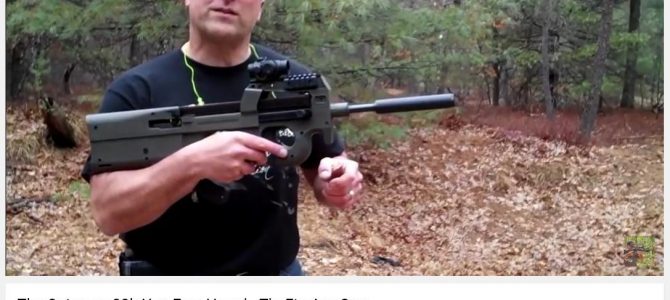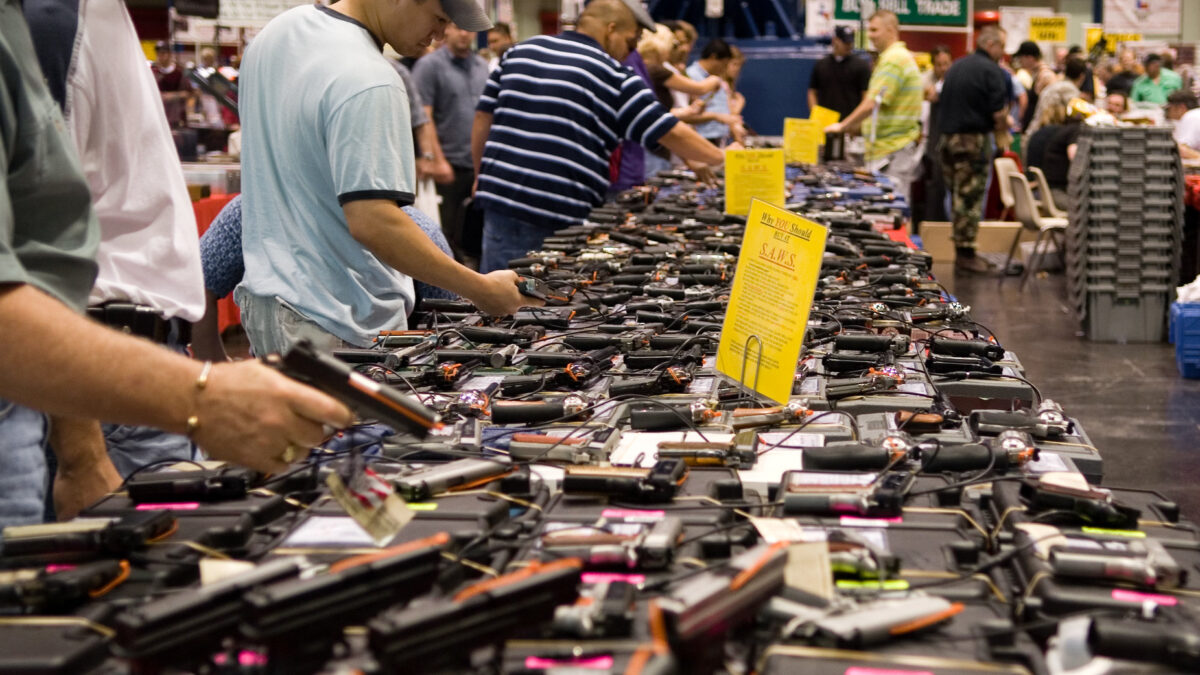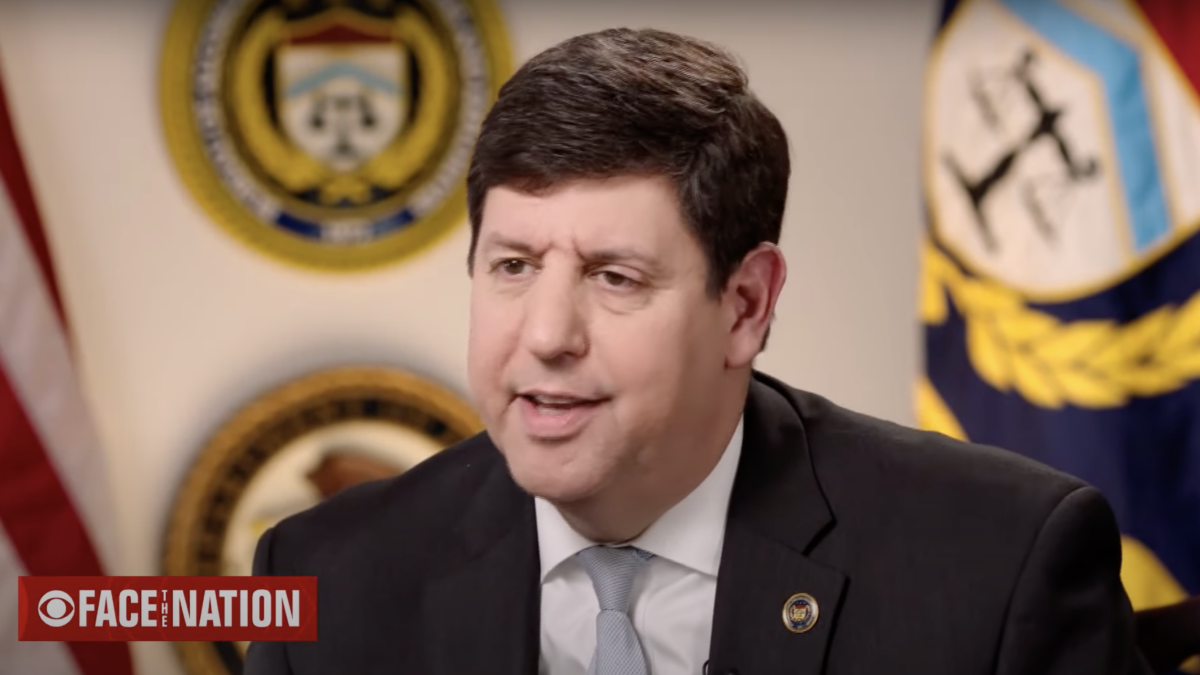A Washington Post report on firearm suppressors published over the weekend wildly misrepresented a YouTube video showcasing the sound-suppressing effects of a .22 LR rifle suppressor. The YouTube video formed the basis of Washington Post reporter Mike Rosenwald’s inaccurate conclusion that suppressors can make “high-powered rifles” nearly silent.
“[G]un-control activists say silencers are getting quieter, particularly in combination with subsonic ammunition, which is less lethal but still damaging. They point to videos on YouTube in which silencers make high-powered rifles have ‘no more sound than a pellet gun,’ according to one demonstrator showing off a silenced semiautomatic .22LR,” Rosenwald claimed in the Washington Post.
The YouTube video, which was produced by Dan Abraham, a gun enthusiast who hosts the TheFireArmGuy channel on YouTube, shows no such thing. You can watch the video for yourself here.
Rather than demonstrating that a “high-powered rifle” can be silenced with a .22 LR suppressor and subsonic ammunition, the video actually shows a low-powered rifle round that cannot even cycle properly due to the under-powered ammunition used by Abraham. In a semiautomatic weapon, a new round is automatically fed into the chamber when the gas explosion caused by firing a round pushes the weapon’s slide or bolt back. Once the slide or bolt is fully pushed back, a recoil or buffer spring pushes the slide or bolt back into battery. As the bolt is pushed back into battery by the buffer spring, it strips a new round from the magazine and pushes it into the chamber, making the firearm ready to fire another round. A weapon that loads a new round into the chamber without any additional mechanical energy from the user is defined as a semiautomatic firearm. A weapon that cannot do that is not a semiautomatic.
“Now it won’t cycle, so you have to cycle it on your own,” Abraham says in the video.
In both the video and the description, Abraham made clear that he was using a special type of low-powered ammunition. The manufacturer’s specifications for the ammunition even state that while the ammunition can be used in semi-automatic rifles, it may not be powerful enough to cycle the firearm.
“These cartridges may be used in semi-automatic firearms, however manual cycling of the action may be required,” CCI states on the specifications page for its “Quiet-22” .22 LR ammunition.
As noted by The Federalist on Tuesday, .22 LR is not by any stretch of the imagination a “high-powered rifle” caliber. It is the smallest, weakest, and lowest-powered readily available rifle cartridge. As a result, it is far and away the most popular caliber for teaching young children how to safely and accurately handle firearms. That’s why ammunition manufacturer CCI says on its web page that the ammunition used in the video is “[g]reat for backyard plinking and introducing youth to the shooting sports.”
Why is this important? Because in a series of e-mails to a reader who objected to the Washington Post’s inaccurate characterization of .22 LR as a “high-powered rifle” cartridge, Washington Post reporter Mike Rosenwald stated that the round was “high-powered” because it could be fired in a “tactical style weapon” that is capable of “semi-automatic” fire.
“Did you watch the video linked in the story?” Rosenwald wrote to reader Daniel Zogaib, who objected to the characterization of .22 LR as a “high-powered” round. “We’re not talking about a 22 u give to your kid to shoot beer bottles. We’re talking about tactical style weapon. I do know about and shoot guns.”
When Zogaib objected and attached a picture of what an actual high-powered rifle round looks like, Rosenwald again refused to admit error.
“Well we disagree. And the guy in the video appears to as well.”
That’s not exactly true, either.
The Federalist contacted Dan Abraham, the maker of the YouTube video cited by Rosenwald, and asked him about the Washington Post’s characterization of his video and of the relative power of the .22 LR rifle he used in it.
“To answer your questions, yes I am the producer of that video,” Abraham told The Federalist via e-mail on Wednesday morning. “Rosenwald misrepresented information by calling a scaled down .22lr (Ruger 10/22 with a High Tower Armory bullpup kit) a ‘high powered rifle’ and no he did not contact me prior to his false article.”
Zogaib, the reader, again informed Rosenwald why .22 LR is not considered by anyone with any knowledge of ballstics to be a “high-powered” rifle round. Rosenwald again objected, asserting that the round is high-powered since it can be fired in a semi-automatic weapon.
“Are kids rifles semi-automatic?” Rosenwald asked.
“The 22 LR I had when I was 12 back in 1974 was,” Zogaib shot back. “It was a Ruger 10/22 with a round magazine that held 10 .22 LR rounds.”
That still wasn’t enough to make Rosenwald admit to or correct his egregious misstatement of fact. Here’s how he responded:
I do underhand [sic] that. But the style of the rifle does have an effect on the power someone can deliver at a target. A rifle like this is far more powerful in that regard then a starter .22 that you have to reload after every round. The power derives from its firing capability not just size of ammo. And my contacts in the gun industry don’t disagree and have not taken offense with my description
Not a single word in that response is accurate. A weapon’s “style” has no effect whatsoever on the ballistic power of a bullet. For some reason, none of these alleged “contacts in the gun industry” are ever quoted or named in Rosenwald’s article for the Washington Post. The reason for that is Rosenwald’s claim is absolute nonsense.
In light of these facts, the trajectory of Rosenwald’s claims about .22 LR is noteworthy. First, he claimed in the article, without any evidence or support whatsoever, that .22 LR is a high-powered round. Then, he claimed on Twitter that it was a high-powered round because modern militaries use it in combat (this is laughably false).
I'm the editor of one of the largest firearms sites on the planet.
You're an idiot.
— Bob Owens (@bob_owens) January 10, 2017
And in his e-mails with Zogaib, Rosenwald claimed that the .22 LR rifle is high-powered not because of its ballistic capabilities, but because it is a “tactical style weapon.” When that claim was refuted, Rosenwald asserted that .22 LR is “high-powered” simply because it can be fired from a semi-automatic rifle. Using that absurd ex post rationalization from Rosenwald, then BB guns–including this model on sale for $39.97 at Wal-Mart–must also be considered “high-powered rifles” since they, too, are capable of semi-automatic fire.
It’s all nonsense. The fact of the matter is that Rosenwald got caught making an egregious error based on extreme ignorance of simple ballistics. He got caught misrepresenting the combat capabilities of .22 LR. He got caught misrepresenting a YouTube video. Rather than admit error and make a correction, Rosenwald doubled down, again and again. At one point, he even dared Zogaib to contact Washington Post editors to inform them of Rosenwald’s willful misrepresentations of the facts.
“Definitely send the complaint,” Rosenwald wrote to Zogaib.
Contrary to the many ridiculous rationalizations offered by Rosenwald, the .22 LR caliber is not “high-powered” by any stretch of the imagination. A firearm round that is too weak to cycle a .22 LR rifle is not “high-powered.” A caliber does not become high-powered by virtue of being fired by a semi-automatic weapon. It does not gain power by being fired from a “tactical style weapon” (whatever that means) as the color and cosmetic style of a weapon have absolutely no ballistic effect whatsoever. The power of a caliber is based entirely on the ballistic capabilities of that cartridge. And those are determined by the dimensions of the bullet and cartridge and the precise type and amount of propellant used. That’s it.
If the Washington Post is worried about an epidemic of “fake news” plaguing the web, then I would suggest it start policing its own reporters who apparently delight in spreading fake news about guns.
This article was updated after it was initially published to include quotes from Dan Abraham, the individual who produced the YouTube video cited by the Washington Post.









